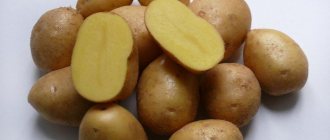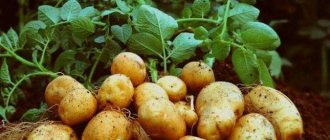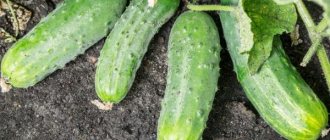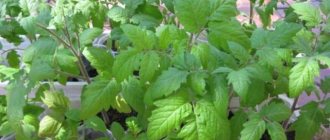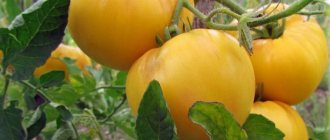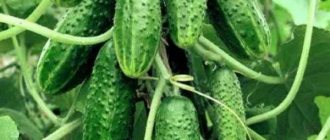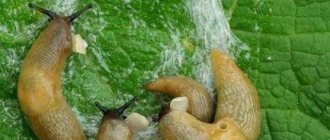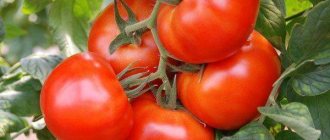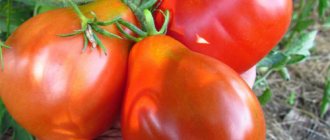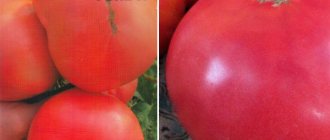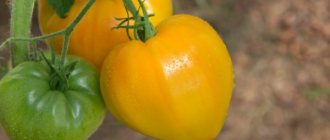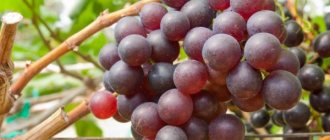In Belarus, a new potato variety, Yanka, was created on the basis of the National Academy of Sciences. The priority in hybridization was to develop a high-yielding crop with good frost resistance. Potatoes were zoned in Central Russia; in 2012, after experimental cultivation, they were included in the State Register. Relatively recently created, the hybrid has not yet earned widespread recognition. A description of the Yana potato variety, photos and reviews from vegetable growers will help you better understand the varietal characteristics of the crop and make a choice in favor of the new product.
Description of the potato variety Yanka
The mid-late variety Yanka produces young shoots 2 weeks after planting the seeds; after 3.5 months the potatoes are ready for harvest. After 1.5 months, the culture reaches conditional ripeness. Young potatoes are not inferior in taste and weight to fully ripened ones. It is distinguished by its thin skin due to the low level of starch and the watery consistency of the tubers. During culinary processing, it completely retains its shape.
The Yanka variety is a potato with a high frost resistance. If the sprouts are damaged by night frosts in the spring, the crop completely forms replacement shoots. The loss of the first shoots does not affect the timing of fruiting and yield.
Yanka potato is a drought-resistant plant that responds well to excess ultraviolet radiation. Vegetation in open areas is much faster than in the shade. In a shaded area, the tops become thin, lose their brightness of color, flowering is rare, the yield is much lower, and the fruits are small. The variety does not tolerate waterlogging of the soil; in the case of a rainy summer, the roots and lower part of the stems may rot.
External description of Janka potatoes:
- The bush is spreading, tall, consists of 5-7 stems growing up to 70 cm and higher. The shoots are thick, dark green, the structure is elastic; with excess moisture, the stems become fragile and break easily.
- The plant is densely leafy, the leaf plate is medium in size, dark green, smooth along the edge. The surface is corrugated, pubescent, with pronounced dark yellow veins. Leaves are lanceolate, opposite.
- The root system is developed, overgrown, forms up to 12 tubers.
- The flowers are large, pale lilac with an orange core, collected in 8 pieces. in inflorescence. After flowering they quickly fall off.
From the photo of the Yanka potato variety, you can compare the external characteristics of the tubers with their description:
- oval-round shape, average weight – 90 g;
- compact location;
- the surface is smooth, the eyes are small, deep;
- the peel is thin, dense, yellow with small brown dots - this is a varietal feature;
- The pulp is dense, juicy, creamy in color, friability is within normal limits.
Potatoes of the Yanka variety produce tubers of the same shape and weight, small fruits - within 5%. The equalized size of medium-sized root crops is convenient for mechanized harvesting. The plant variety is suitable for growing in a personal backyard and on the territory of agricultural complexes.
Important! Yanka potatoes are stored for a long time, at a temperature of +40 C and an air humidity of 85%, they do not sprout until spring, and retain their presentation and taste.
Reviews
Farmers and gardeners love the variety for its large fruits, large yields, and disease resistance.
It is considered more promising for planting on personal plots. Most reviews are related to increased taste, aroma, and poor cooking properties. I usually plant Lugovskaya potatoes on my plot. It grows well, the harvest is large, the tubers are large and tasty. But it turned out that there were few seeds left. I read about the Yanka variety in a magazine, liked the description, and decided to buy it. I planted everything according to the instructions, although I fertilized the soil quite a bit. I was afraid that it wouldn’t even come up. I was pleasantly surprised when I started digging. The potatoes are all large, beautiful, there are a lot of them on the bush. Now I will continue to plant it.
I rarely get to go to the dacha due to work, so I try to plant varieties that are resistant to diseases and pests. It turned out that I bought the Yanka variety and several others to try. I planted it strictly according to the recommendations; before that I treated it with fertilizers. Compared to other potatoes, this variety did not look any worse. Some sprouted poorly, but Yanka quickly rose and, while digging, pleased me with its large fruits and quantity. Now I will definitely plant it every year.
I try to choose varieties only with good yield and external characteristics. At the fair I learned about the existence of the Yanka variety, found out the features of care and cultivation. It is ideal for my region, everything else suits me, so I bought seed samples. I planted potatoes, looked after them according to the rules, provided fertilizing, and monitored the humidity of the area. The variety performed very well when digging, the tubers are even, the presentation is excellent. People bought up these potatoes quickly.
Yanka varietal potatoes are popular in the large potato market. It showed its qualities well during tests at experimental sites, when grown in amateur gardens and small farms. It is stable, reliable in growth and productivity. You should systematically inspect your plantings for the presence of diseases and pests.
Taste qualities of Yanka potatoes
Yanka is a table potato variety, the concentration of dry substances is within 22% of which 65% starch. During culinary processing, potatoes do not oxidize after peeling. Fried and boiled tubers do not lose their shape, the color of the pulp does not change.
When entering the crop into the State Register, the tasting commission gave a taste rating of 4.8 points out of 5 possible. Yanka potatoes are universally used, suitable for first courses, as a side dish, and included in vegetable salads. Root vegetables are baked, boiled and fried.
Pros and cons of the variety
According to the description given by the copyright holder, the Yana potato variety has the following advantages:
- stable fruiting;
- high productivity;
- good taste of ripened fruits;
- undemanding to soil composition;
- agricultural practices common to the crop;
- adapted to temperate climates;
- does not require watering;
- does not darken during cooking or become overcooked;
- long-term storage, losses – within 4%;
- not damaged during transportation;
- suitable for industrial cultivation;
- The fruits are aligned, universal in use.
The disadvantages of the Yanka variety include intolerance to waterlogging of the soil. Potatoes do not resist rhizoctonia blight well.
Reviews
I am engaged in growing potatoes for sale. Many of my friends, entrepreneurs, began to switch to this variety en masse. First of all, as they say, “Yanka” is a pretty good potato. Good yield, excellent preservation. The taste is also at a high level. People buy it and come back again. Secondly, patriotism. It’s obvious that the Westerners are putting pressure on us, so they’re taking revenge, so to speak. I myself have not yet decided to switch to Yanka, although I am behind them in terms of yield. Maybe next year I'll think about it.
Elena.
The variety appeared on the market recently. I am a lover of everything new, so I immediately took 2 kg to try. I cooked the puree and fried it. What can I say, since then Yanka has been one of the main potato varieties that our family buys. Potatoes get mushy if you cook them for a long time. If not for long, then it remains quite dense. In general, universal. Therefore, it is perfect for preparing both salads and delicate purees. Read reviews on the Internet, look at photos, see for yourself.
Karina.
I didn’t hear about this variety until 2021. I was buying seed potatoes at the market, the seller offered it to Yanka. He praised the variety, saying it doesn’t require watering and grows in any type of soil. Overall, I'm satisfied with the variety. Previously, I only loved Scarb, but now they are equal.
Kirill.
I like this variety because it doesn’t cook well; I don’t like porridge. I have been growing Yanka for a long time, one of those varieties that I am not going to give up. The taste is excellent and it lasts a long time. During the entire cultivation period I never got sick. Colorado dogs gnaw, but they gnaw on any potato I have. Several treatments and in general, there is no problem.
Planting and caring for Yanka potatoes
The culture is a mid-late crop; propagation with sprouted seeds is recommended. In the middle zone, potatoes are planted in early May. By this time the seeds should sprout. The optimal size of sprouts is no more than 3 cm; long ones break off when planted. The tuber needs time to form new ones; the ripening period increases.
Seeds are harvested in the fall or selected from the total mass in the spring. Place in boxes or lay out in a thin layer on a flat surface. Germination time is from March 15 to May 1, take the seeds out of the basement, place them in a lighted place at a temperature of +80 C, and ventilate the room every day.
Selection and preparation of a landing site
Potatoes are grown only in a well-lit area; in the shade, Yanka will give a small harvest, it will be reduced by half. The variety is drought-resistant and does not tolerate even slight waterlogging of the soil. To determine the bed, lowlands and areas with close groundwater are not considered.
The composition of the soil for Yankee should be light, fertile, neutral. The bed for the variety is prepared in the fall:
- They are digging up the area.
- Remove dry tops, roots and stems of weeds.
- Neutralize the composition (if the soils are acidic) with dolomite flour.
- Scatter compost on top.
In the spring, a week before planting, the site is dug up again and saltpeter is added.
Attention! Heavily fertilized soil is enriched with nitrogen; an excess of the substance will produce powerful tops, but small tubers.
Preparation of planting material
Sprouted potatoes are hardened for 10 days before being placed on the site, and the temperature is gradually lowered. Open the windows in the room where the potatoes are standing, or take them outside for 3 hours. Before planting, preventive treatment against fungus is carried out. Potatoes are placed in a solution of manganese and boric acid or doused with preparations containing copper. Large fruits are cut into several parts, ensuring that each fragment has 2 sprouts. The procedure is carried out 14 days before planting.
Landing rules
The Yanka hybrid variety is planted in single holes or furrows. The arrangement of potatoes does not change depending on the planting method:
- Row spacing – 50 cm, interval between holes – 35 cm, depth – 20 cm.
- Seeds are laid out at a distance of 7 cm, 2 pieces each. into one hole.
- Cover the top with a mixture of peat and ash with a layer of 5 cm.
- Cover with soil, no need to water.
The seed material is laid out carefully so as not to damage the sprouts.
Watering and fertilizing
The Yanka variety does not require additional watering; seasonal rainfall is sufficient for potatoes. The first feeding is carried out a month after planting. Urea and phosphate are added. The next fertilizer is given during flowering using potassium sulfate. You can add bird droppings diluted in water. At the time of tuber formation, the bushes are treated with superphosphate.
Loosening and weeding
The first loosening is indicated when the rows are well defined, so as not to weed out the young shoots. Weeding is carried out as the weeds grow; weeds should not be allowed to develop at the expense of the potatoes. The cut grass is removed from the garden bed and the roots are removed. Loosening will allow oxygen to flow to the root. Weeding will remove weeds, which are where fungal spores accumulate.
Hilling
The first procedure is carried out when the plant reaches a height of 20-25 cm. The potatoes planted in the furrows are covered from both sides to the crown with a continuous ridge. Single holes are hilled on all sides, resulting in a small hill. After 21 days, the event is repeated, the embankment is trimmed, and weeds are removed. When the potatoes have completely bloomed, they are no longer afraid of weeds.
Features of cultivation
As for agricultural technology, this potato tolerates any soil, but prefers light, fertile soil. Productivity increases with moderate application of mineral complex fertilizers. Complexes with a high nitrogen content should be avoided; they promote abundant growth of tops to the detriment of tubers.
Read more about how to feed potatoes, when and how to apply fertilizers, and how to do it correctly when planting.
Tip: For planting, medium-sized root crops that are not damaged by pests are selected. They are pickled, treated with growth stimulants and germinated in the light or in sawdust.
Planting begins in the second half of May , when the soil has completely warmed up. In warmer regions, tubers can be planted earlier.
Before planting, the soil is thoroughly loosened, and plant remains that can become a breeding ground for bacteria and insect larvae are selected from it. For greater safety, the soil can be treated with disinfectants and mulched.
Every three years, planting areas need to be changed to avoid infection. It is better to plant potatoes on land that was occupied by legumes, cabbage, carrots, and meadow grasses.
Tubers are planted with a depth of 10 cm , the distance between the holes is 30-35 cm. Row spacing is left 70 cm wide. Humus and wood ash can be spread over the holes , which increases the nutritional value of the soil.
During the planting season, they hill up 2-3 times, forming high ridges above the bushes. Watering is recommended, as well as a one-time application of fertilizers. 10 days before harvesting, the bushes can be sprayed with an aqueous solution of superphosphate. Foliar feeding allows you to increase the weight of tubers, preventing them from accumulating nitrates.
The tubers have a thin but durable skin that is not damaged when digging. For industrial cultivation, you can use combines with direct or side grip. The collected potatoes are sorted and dried at the boundary or under a canopy. Potatoes intended for sale can be packed directly in the field.
We bring to your attention some more interesting materials about methods of growing potatoes. Dutch technologies, harvest without weeding and hilling, growing early varieties, as well as harvesting from seeds, under straw, in barrels, in boxes, in bags.
Diseases and pests
The breeding variety is genetically resistant to most diseases that affect the crop. An infection develops if growing conditions do not meet the potato requirements. The Yanka variety affects late blight in cases of high humidity and low air temperature. The fungus infects the entire plant from tubers to tops. Appears in the second half of July as dark spots on leaves and stems. For preventive purposes, planting material is treated; if the measure is ineffective, branded drugs are used.
Rhizoctonia is a fungal infection that affects the plant at any stage of growth. It appears as dark spots on the surface of the tuber and leaves. Without measures taken, the disease can destroy most of the crop. To prevent infection, they observe crop rotation, remove diseased plants from the site, and do not plant potatoes in one place for more than 3 years. The spread of fungal spores is stopped using Baktofil, Maxim, Agat-25K.
Colorado potato beetle larvae parasitize Janka potatoes. If there are few of them, then they are collected manually; a large number of pests are destroyed with the contact drug “Decis” or “Actellik”.
Harvesting and storage
The fruit of the Yanka variety reaches biological ripeness by the end of August, at which time harvesting begins. If weather conditions prevent work, Yanka potatoes can remain in the ground for a long time without losing their shape and taste. Dug up potatoes should not be left in the sun for a long time. Ultraviolet light promotes the breakdown of enzymes, solanine is produced, the substance colors the tubers green. Potatoes lose their taste, become toxic, and should not be eaten.
The harvested crop is poured into a thin layer to dry indoors or in a shaded area. If the tubers are prepared for sale, they are first washed and dried well. To store vegetables, do not wash them. The harvest is sorted, small fruits are selected, and some are left for planting.
Advice! Potato planting material is selected weighing no more than 60 g.
The planting material fully retains its varietal characteristics for 3 years; after the expiration of the period, it is advisable to replace the Yanka potatoes with new ones. The harvest is stored in the basement or in special piles. The optimal temperature is +2-40 C, humidity is 80-85%. The room must be equipped with ventilation and not allow light to pass through.
